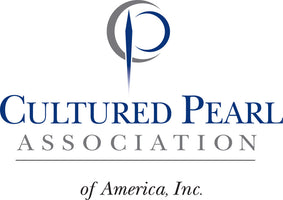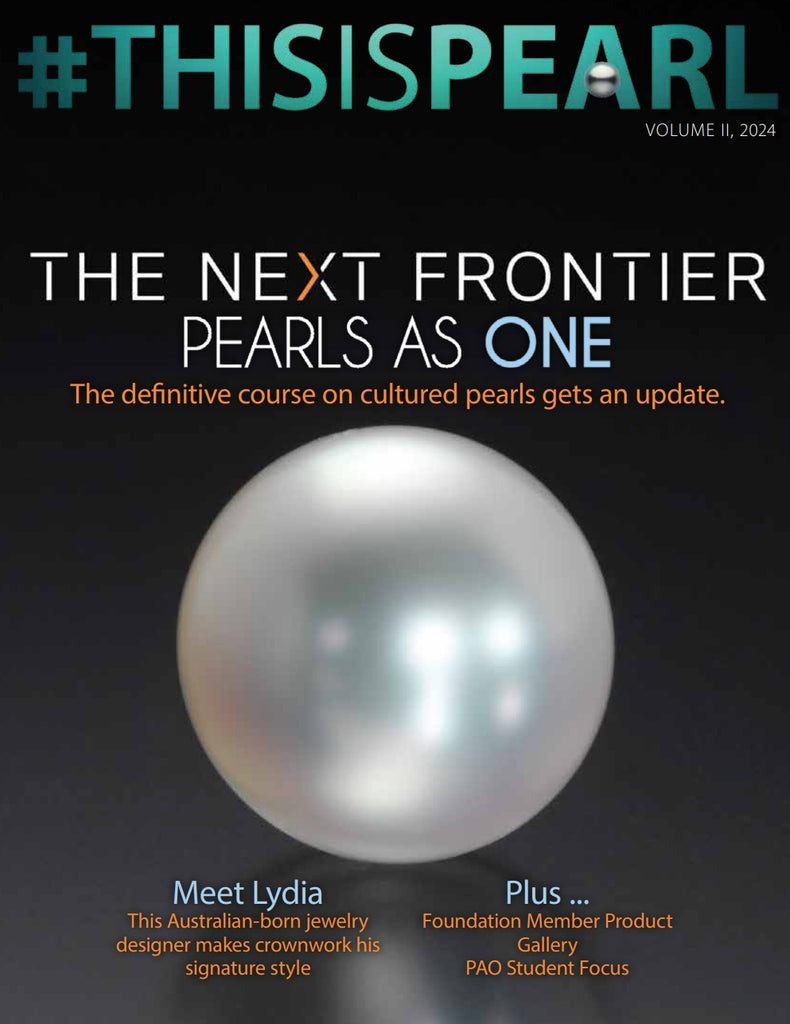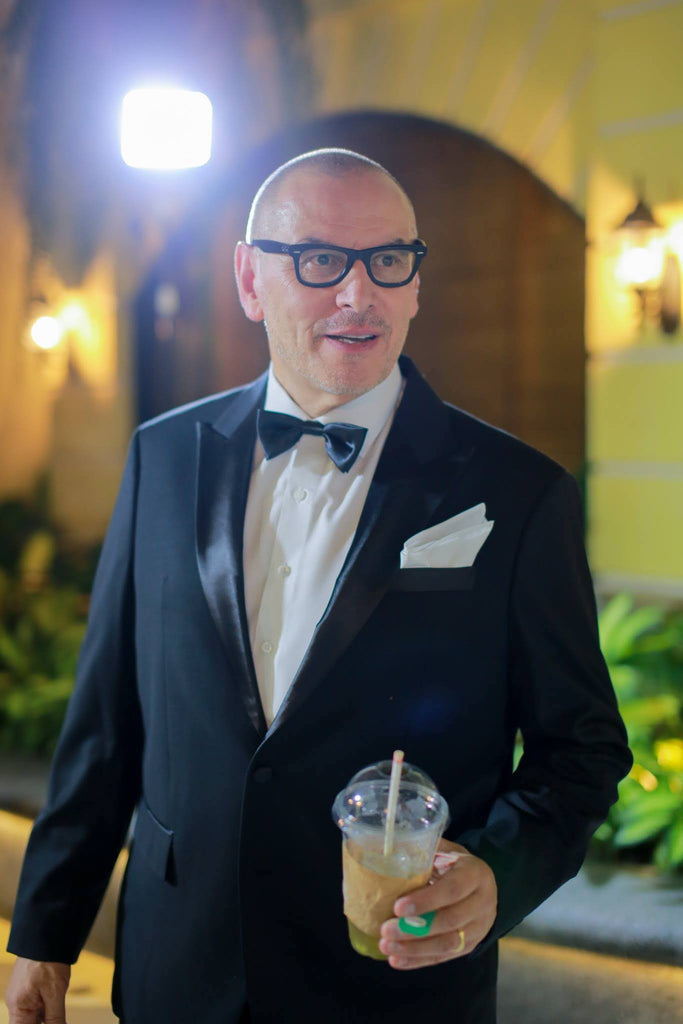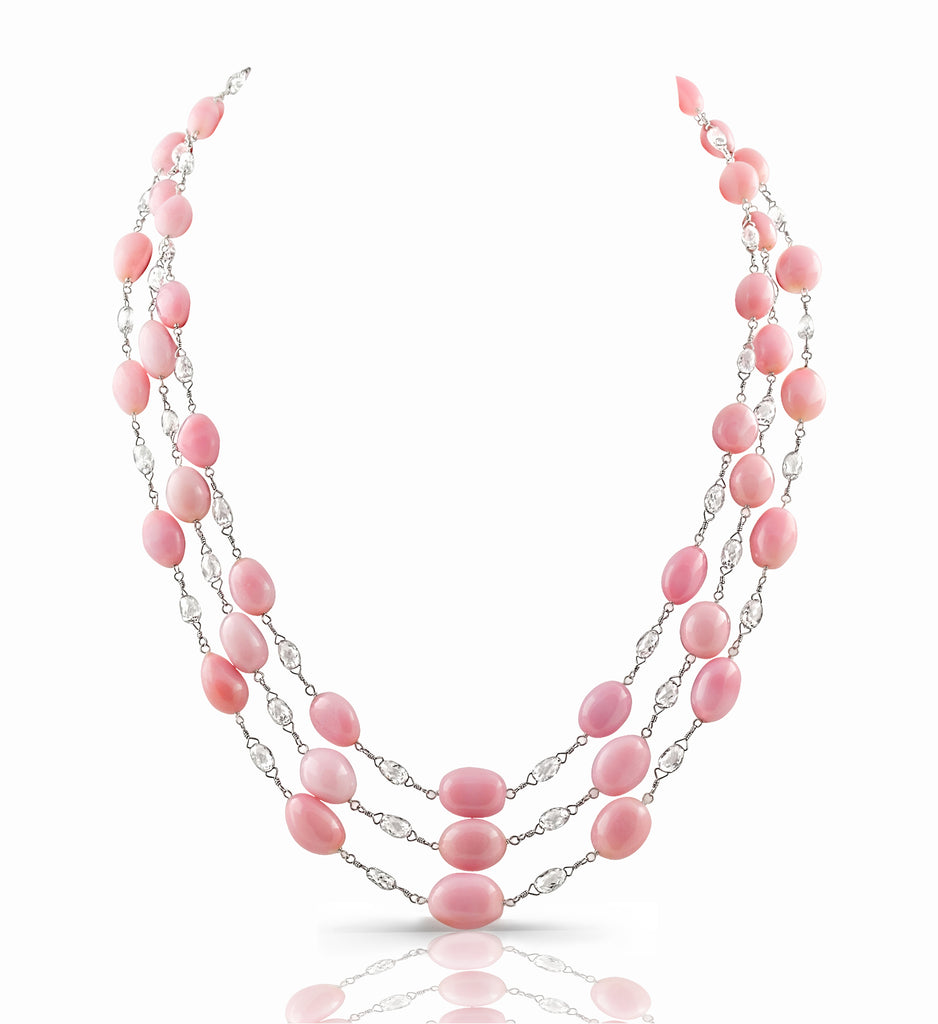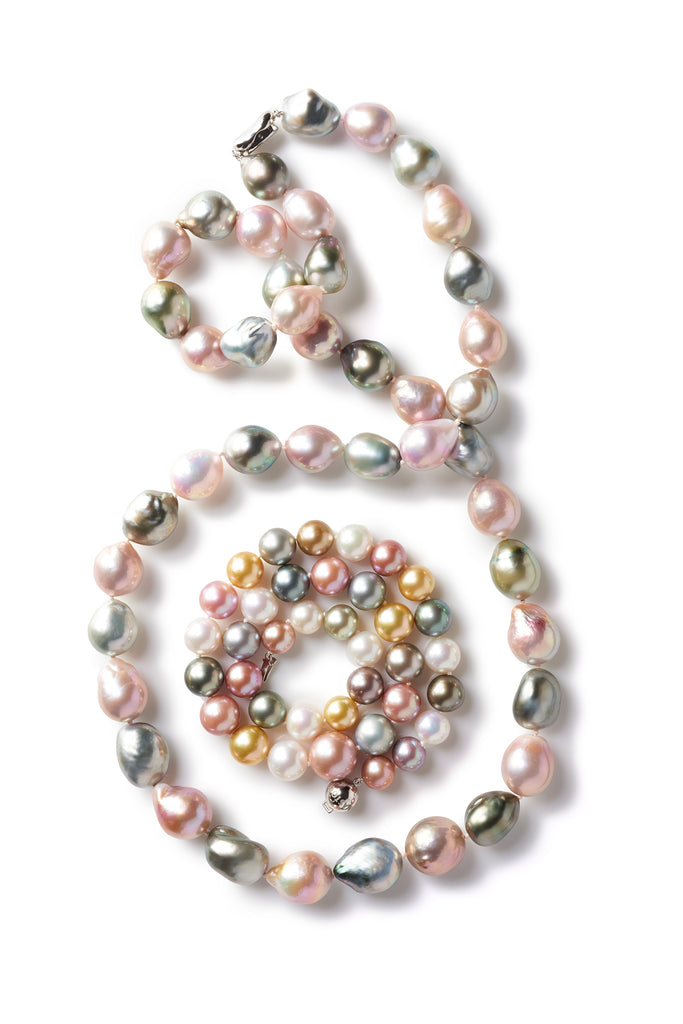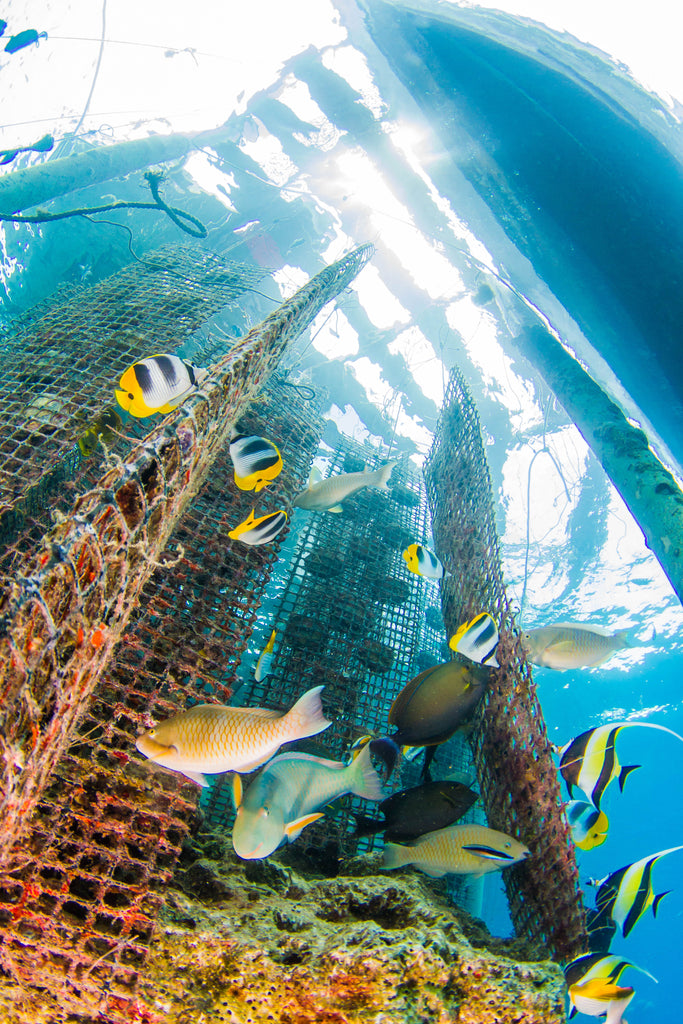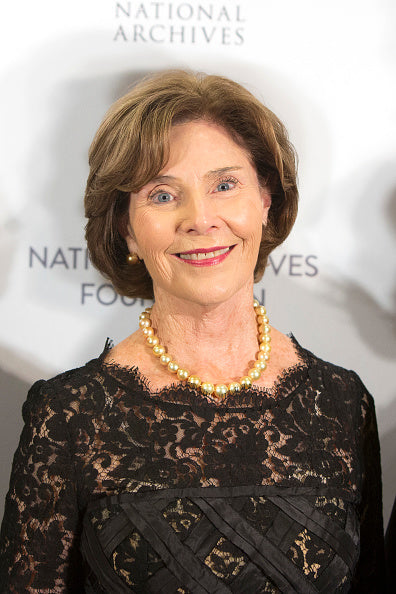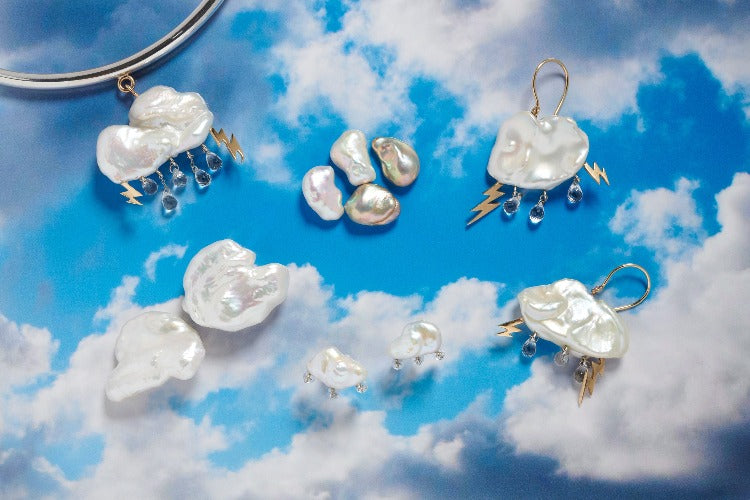#ThisIsPearl Volume II, 2024
Welcome our New CPAA Board Members!
Douglas McLaurin became the new CPAA executive director in March 2024 when Jennifer Heebner stepped down. With a new board of directors—see list below—CPAA will be in good hands.
CPAA Board of Directors
- Jeremy Shepherd / PearlParadise.com, Inc., President
- Peggy Grosz / Assael, vice president,
- Sarah Cannizaro / Kojima Pearl, Treasurer
- Joshua Israileff / ASBA USA, Secretary
- Matt Harris / Matt Harris Designs, Marketing chair
- Anil Maloo / Baggins, Inc., Past President,
- Sonny Sethi / Tara & Sons, Inc., Fundraising Chairman & Past President
- Fran Mastoloni / Mastoloni Pearls, Foreign Relations chair & Past President,
See the entire CPAA membership directory at cpaa.org.
See You Soon in Sin City! Find CPAA Members at the Las Vegas Jewelry Trade Fairs!
JCK LUXURY at The Venetian Expo
Level 2, Las Vegas - Invitation Only. May 29–May 30, 2024.
Open to All from June 1–3 2024
- Lika Behar Collection LUX201
- Alishan LUX401A
- Baggins LUX800A
AGTA GemFair Las Vegas at JCK
The Venetian Expo, Gems Pavilion, Halls C & D. May 30—June 3, 2024
- ASBA #A29052
- Continental Pearl #A30052
JCK Las Vegas
The Venetian Expo. May 31—June 3, 2024.
- Stuller #13089 and #52097
- Hanadama #17123 (Currents Level 2)
- Mastoloni Pearls Plumb Club-400
- Richline Group (Honora) Plumb Club-500
- Imperial Pearl Plumb Club-600
Las Vegas Antique Jewelry and Watch Show at the Wynn Las Vegas
June 1–4
- Aaron Faber Booth 1111
Las Vegas JOGS show
- Aloha Pearls #1313.
Couture at the Wynn Las Vegas. May 30—June 2, 2024.
- Tariq Riaz #306
- Assael #113
- Barbara Heinrich Studio #445
- Crevoshay #134
Foundation Member Product Gallery

The Next Frontier - Pearls as One
Eight-year-old Pearls As One (PAO) has gotten a refresh. Newly appointed executive director of the Cultured Pearl Association of America (CPAA), longtime PAO course instructor, and one of the scientists who brought the Sea of Cortez pearl oyster in Mexico back from the brink of extinction, Douglas McLaurin-Moreno opens up about the changes.
— By Jennifer Heebner
Proprietary online course Pearls As One (PAO) officially debuted to the trade in 2016 and has since amassed more than 90,000 students. All are enrolled in the über user-friendly online platform vetted by pearl authorities around the globe to get the most thorough cultured pearl education available. Sponsorships by pearl entities around the world have made it possible to keep the education available for free to many students.
One of the best parts of the course is the easy-to-edit platform on which it was created by Jeremy Shepherd, the newly appointed president of the Cultured Pearl Association of America (CPAA). Shepherd enlisted Douglas McLaurin-Moreno, course instructor nearly since PAO’s inception, to work with him answering student questions and making course updates because of his background. McLaurin-Moreno is a biochemistry engineer with a master’s degree in sustainability and natural resources management as well as a university professor, and one of scientists who resurrected the Sea of Cortez pearl oyster, a rainbow-lipped Pteria sterna that was fished nearly to extinction.
McLaurin-Moreno took over the position of executive director of CPAA when yours truly stepped down in March 2024. He gave me an overview of the changes he and Shepherd recently made to the course to keep it timely, relevant, and reflective of changes in the market, as well as a peek at what’s to come.
Jennifer Heebner (JH): Tell me about the biggest changes you made to the course.
Douglas McLaurin-Moreno (DMM): We didn’t have the best photos for the course when it was initially written, so new photographs and infographics were part of the changes. I also wrote all new content for the “Retailer Guides to Grading.” Now we show comparisons of pearl grades next to each other, we’re able to compare the luster of pearls and different coloration. We replaced all the previous images with news ones, some from the CPAA’s Members-Only Stock Photo Library as well as maps, diagrams, and tables to better describe grades. There were no tables before, so the information was sort of scattered, there was no easy way to compare pearls. These visual updates are some of the most important changes.
JH: One of the best aspects—I think—of PAO is how nimble you can be to make edits and updates. CPAA is a niche association, so there are fewer layers of approval to get, making it easier to make changes quickly.
DMM: Absolutely! This course is alive, will continue to grow, and is written in so many different languages. PAO is available in 10 languages—English, French, Spanish, German, Chinese, Japanese, Russian, Italian, Portuguese, and Vietnamese. And as CPAA is the source and creator, materials can be updated as changes in industry happen. PAO will never stop being updated. And students who have finished the course can continue to return to it for refreshers. The idea is that PAO will always keep you updated, it’s not a course you take once and forget. PAO gives you a lot of value, especially if you are 100% involved in the pearl industry. You want your people, your employees, to be in the loop. PAO is an invaluable tool.
JH: When will you add chapters?
DMM: I am working on a natural pearl chapter now that I hope to unveil later this year. We’ll cover most types of natural pearls, including the Queen Conch, Scallop, Quahog, Spiny Oyster, giant clams, Melo Melo pearls, and river mussels. Since we are a nonprofit, funding from pearl sources enables us to cover more, so we are hopeful to write about other types—including cultured Abalone pearls (from Peru!)—in the future. We could also have guest speakers and videos to better explain different varieties. We want PAO to be the most important pearl course in the world.
Pearls as One - Student Focus
Daniela Velez, Executive Assistant at PearlParadise.com

Mexico native Daniela Velez signed up to take the Pearls As One (PAO) course shortly after
accepting a remote executive assistant position for PearlParadise.com. With no prior pearl knowledge or jewelry industry experience, she realized that she needed the pearl education to effectively carry out her tasks.
“Pearls are the center of business I work for,” she explains. “And I felt like I had everything I needed to know—the history and father of cultured pearls, exact dates, grading, the value of pearls, and more—to help me in my job. PAO demystified pearls for me.”
Velez earned her certificate of completion in February 2024. Read on to learn more about her and the impact of her PAO education.
Tell me about some specific points of your PAO education.
I was really confused with pearl grading. I didn’t understand about nacre thickness, pearl roundness, or shapes. I knew about the diameter of pearls but there was much more. There are so many more factors, like surface imperfections, to take into consideration for grading. And now I know where specific pearls come from and can identify those locations. Most people don’t know that pearls come from so many different places—especially in Mexico, where it is not so common to wear them.
Have you been to the Sea of Cortez pearl farm in Guaymas, Mexico, in the north?
Not yet, but I look forward to visiting. The farm is about a four-hour plane ride from me.
What is your favorite type of pearl and why?
I’m obsessed with cultured freshwater Fireball pearls! I think they are the prettiest and I like the colors. The luster on them is incredible, and you can’t find identical ones, each is unique and embodies its own personality.
What pearl jewelry do you own and what piece do you wear most?
I have some pearl necklaces. I often wear one with gold string that features an axolotl motif hugging a
cream-color freshwater pearl. It’s a pendant necklace. Axolotl are amphibians that are native to Mexico.
What is the most iconic look in pearls?
Audrey Hepburn in “Breakfast at Tiffany”! I love that strand of pearls trailing down her
back when she is looking in the windows. I love the pearl designs of Vivienne Westwood, too, though she only uses costume pearls, not real ones.
How else has PAO influenced you?
I’m now collecting pearls and looking into studying jewelry at a university here in my state. They
offer a degree in jewelry making. I’ll start by making pendants with freshwater pearls and see where it takes me.
CPAA Affiliate Member Spotlight: Lydia Tutunjian and Alishan Halebian of Alishan
Armenian expats Lydia Tutunjian and Alishan Halebian both left their former Soviet-era homeland decades ago, finding each other—and jewelry—in Southern California.
Halebian’s career track was art from the start, as he studied ceramics, design, and drawing, ultimately learning to set gemstones. He worked for a jeweler for two years while Tutunjian built up her own profession in banking. While at the jewelry company, Halebian spied a magazine about German jewelry design and was smitten; he loved the sculptural aesthetic and minimalist designs so much that it inspired him to learn more about design and fabrication.
“I bought a technical book that taught me at what temperature to melt gold, how to file pieces, everything,” he recollects.
Once he felt confident enough in his abilities, Halebian struck out on his own— “It was December 1989,” says Tutunjian—to both set stones and design and manufacture jewelry. By this time, he and Tutunjian had two kids, and she decided to join him in the business so she would have the freedom to be a parent while earning an income.
As they learned and their business grew, a clear design signature emerged: mixed metals
with a variety of hand-textured finishes. There’s a hand-scratched look made with a sharp-pointed
steel tool, a crisscross pattern— “Often on oxidized silver,” says Halebian—made by a tool with
inverted diamond tips, and softer circular effects created by coarse emery paper discs.

“I’ve always loved pencil drawings, so I try to bring the different textures, lighting effects, and
play of shadows from sketching to life in our jewelry,” he explains.
Today, all the jewelry is made in the couple’s Tustin, Calif., studio, save for some stone setting
and platinum casting. Most of the metalwork— sterling silver, 18k gold, and platinum—is fabricated because of their love of imperfection.
“In nature, there are no straight lines, and that’s why I love fabrication,” he says. “Many designs made in CAD have no life to them.”
This love of flaws extends to gemstones, as the pair works with a wide variety. “I like gems that
are more imperfect because they have character,” he says.
The couple has a particularly soft spot for cultured pearls. “They evoke an emotional response,” he says. “White pearls represent purity while black pearls offer drama.”
“I have pearls where two-thirds of it is beautiful and the rest is flawed, but I can design around the flaws.”
Find the couple at JCK LUXURY at The Venetian Expo, Level 2, May 29 (Invitation Only) – June 3, 2024, in booth 401A.
Pearl Jewelry Trends

Continue reading
